All things old China - books, anecdotes, stories, podcasts, factoids & ramblings from the author Paul French
Posted: September 17th, 2015 | No Comments »
I’ve blogged before about the various tactics the Nazi authorities resident in Shanghai in the 1930s used against the Jewish population of the International Settlement (here, threatening retribution against their relatives back in Europe if they staged an anti-Nazi play in Hongkew). Here though is another tactic the Nazis used in Shanghai – dredging up the old ‘Jewish blood rituals’ nonsense.
It’s a long standing bit of rubbish used by Nazis in Europe and anti-Semites for ages….here given a Shanghai twist. The gist is that Jews had an ‘operating table’ in the Jewish cemetery in the old Eastern District (Yangpu nowadays) where they ritualistically murdered non-Jews. The Nazi slanders intimated that such ritualistic killings by Jews of non-Jews had gone on during the First World War. This was, of course, and as the Shanghai Municipal Council and the newspapers including the North-China Daily News reported, nonsense – not least because the Jewish cemetery (at 727 Baikal Road in Yangtszepoo District – now Huimi Road/Weiming Road in Yangpu) was only founded in 1917 and didn’t really come into use until 1919. However, it does show how active the Nazi propaganda machine was in spreading anti-Semitic ideas in Shanghai in the late 1930s and 1940s.
What is not totally clear is who exactly the Nazi agents were directing their propaganda at? Shanghailanders or Chinese in Shanghai.
BTW: Baikal Road was the biggest Jewish cemetery in Shanghai, consisting of 1,692 graves. The dismantling of monuments and exhumation of remains started September 1958 and was completed November 1958. Re-interment was reportedly completed on December 1958.
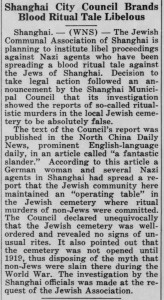
Posted: September 16th, 2015 | No Comments »
I do know Dave Schooler was a Jewish bandmaster who had a long career and carried on through World War Two – as to what his show “Shanghai” was all about…I have no idea….
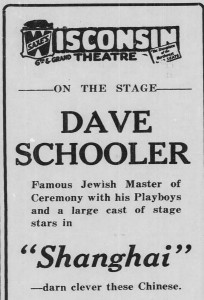
Posted: September 15th, 2015 | No Comments »
There aren’t many novels that deal with the fall out from the end of the Dutch East Indies, the collapse of Holland’s empire in the Far East and the creation of Indonesia. However, Janwillem van de Wetering’s Outsider in Amsterdam does, to an extent. A central figure in the novel, set in Amsterdam, is a former Papuan fighter living in Amsterdam. Van de Wetering was Dutch, but lived for a time in Japan and was a student of Zen Buddhism. Published in 1975 it was the first in Van de Wetering’s Grijpstra and de Gier detective series.
On a quiet street in downtown Amsterdam, the founder of a new religious society/commune-a group that calls itself ‘Hindist’ and mixes elements of various ‘Eastern’ traditions-is found hanging from a ceiling beam. Detective-Adjutant Grijpstra and Sergeant de Gier of the Amsterdam police are sent to investigate what looks like a simple suicide, but they are immediately suspicious of the circumstances.
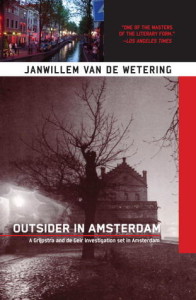
Earlier covers highlighted the East Indies theme a bit more in various ways (not always strictly accurately)….
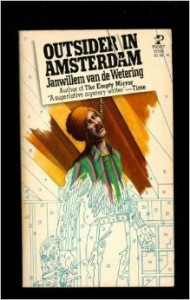
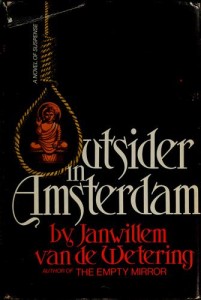
Posted: September 15th, 2015 | 1 Comment »
There’s now a Japanese translation of Midnight in Peking out there…..
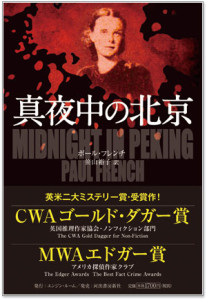
Posted: September 15th, 2015 | No Comments »
American newspapers gossip about Chiang Kai-shek and whether or not he’s up to the job in 1944….
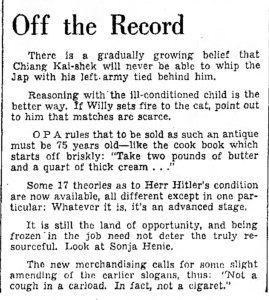
Posted: September 14th, 2015 | 1 Comment »
An interesting new Penguin Special on Beethoven in China….
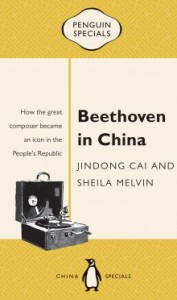
At the turn of the twentieth century, students returning from abroad brought Beethoven to China. The composer’s perseverance in the face of adversity and his musical genius resonated in a nation searching for a way forward. Beethoven remained a durable part of Chinese life in the decades that followed, becoming an icon to intellectuals, music fans and party cadres alike, and playing a role in major historical events from the May Fourth Movement to the normalisation of US-China relations. Jindong Cai, whose love for the musician began during the Cultural Revolution, and culture journalist Sheila Melvin tell the compelling story of Beethoven and the Chinese people.
Posted: September 12th, 2015 | No Comments »
Alan Geoffrey Yates (aka Carter Brown) was an English-born, Australian pulp writer who wrote in numerous genres under numerous non-de-plumes. He was translated into multiple languages and had multiple covers. Here are just a series of various covers for his 1962 pulp Hong Kong Caper…

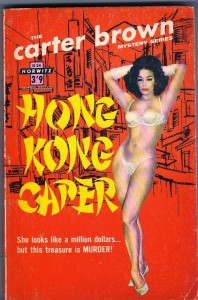
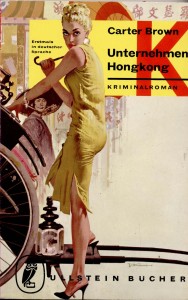


Posted: September 12th, 2015 | No Comments »
An interesting new book on life pre-Canton from Ng Chin-keong…..and a full review of the book on the Asian Review of Books site here….
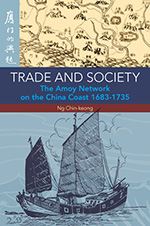
The book examines the social and economic changes in south Fukien (Fujian) on the southeast coast of China during late imperial times. Faced with land shortages and overpopulation, the rural population of south Fukien turned to the sea in search of fresh opportunities to secure a livelihood. With the tacit support of local officials and the scholar gentry, the merchants played the pivotal role in long-distance trade, and the commercial networks they established spanned the entire China coast, making the port city of Amoy (Xiamen) a major centre for maritime trade. In the work, the author discusses four interrelated spheres of activity, namely, the traditional rural sector, the port cities, the coastal trade and the overseas trade links. He argues that the creative use of clan organizations was key to the growth of the Amoy network along the coast as well as overseas.













